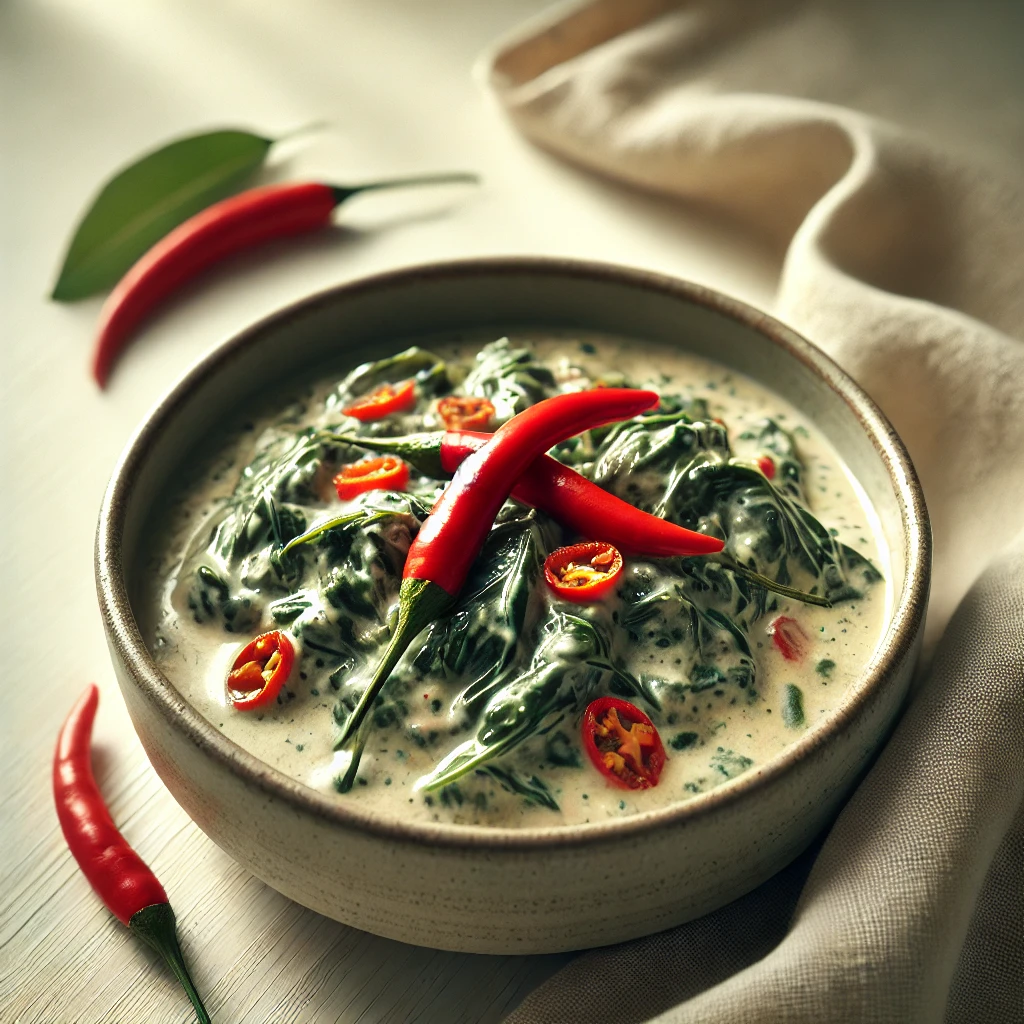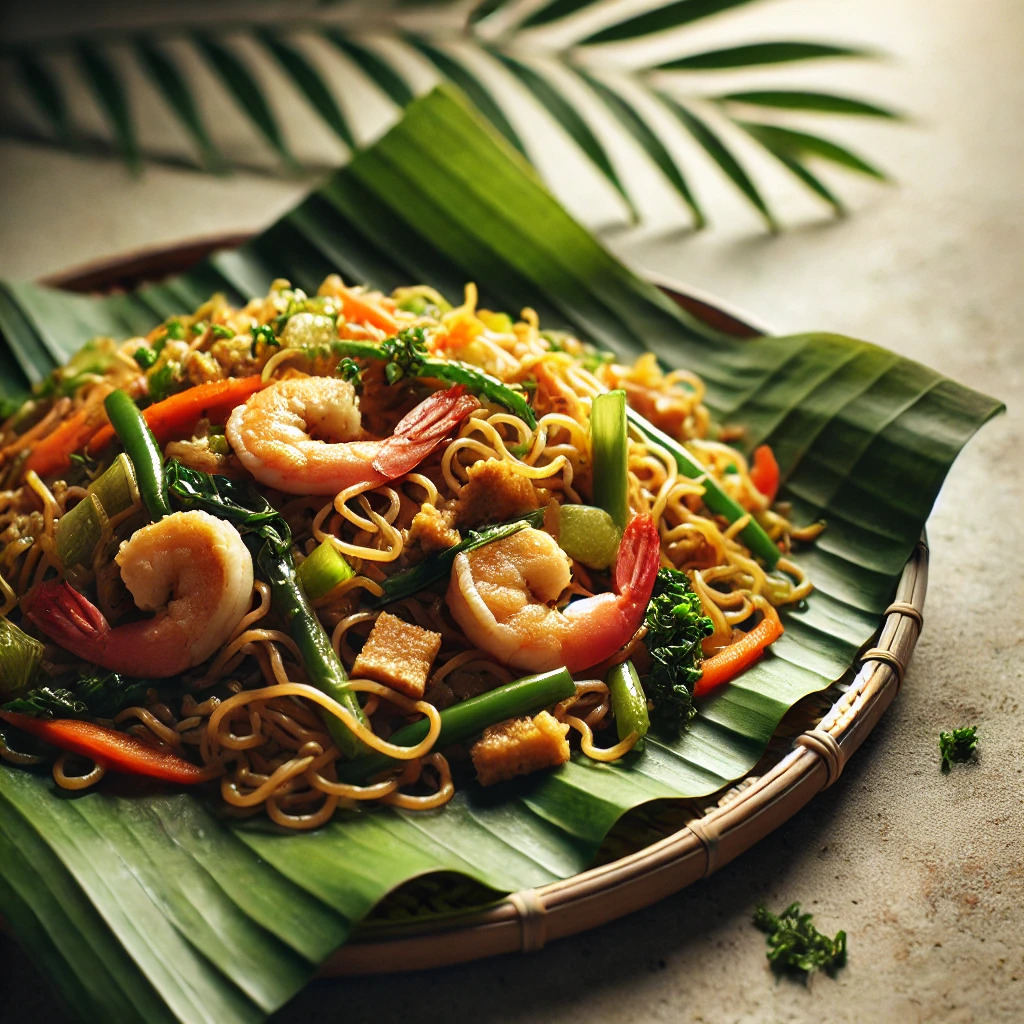Have you ever tasted the ocean in a single bite? Imagine the briny freshness of just-caught fish, the zing of citrus, and the warmth of ginger dancing on your tongue. This is the essence of Kinilaw, the Philippines’ answer to ceviche and a dish that captures the vibrant flavors of the archipelago’s 7,000+ islands.
Kinilaw (pronounced kee-nee-law) is more than just a recipe; it’s a culinary journey that takes you straight to the sun-soaked beaches and bustling markets of the Philippines. This dish is a testament to the country’s rich coastal heritage, where fresh seafood has been a staple for centuries. Unlike its Latin American cousin ceviche, Kinilaw often incorporates coconut milk, adding a creamy, tropical twist that sets it apart.
What makes Kinilaw truly special is its versatility. While traditionally made with raw fish, it can be adapted to suit various dietary needs. Vegans can swap the fish for green mangoes or hearts of palm, while those avoiding alcohol can skip the vinegar. It’s a naturally gluten-free dish that celebrates clean, bold flavors without the need for heavy sauces or complicated cooking techniques.
As we dive into this recipe, prepare to embark on a culinary adventure that will transport your taste buds to the shores of the Philippines. Whether you’re a seasoned chef or a curious home cook, Kinilaw offers a refreshing and exciting way to explore Filipino cuisine. So, let’s grab our ingredients and get ready to create a dish that’s as much about the experience as it is about the flavors.
Recipe Ingredients
To create this mouthwatering Kinilaw, you’ll need the following ingredients:
| Ingredient | Quantity | Notes |
|---|---|---|
| Fresh white fish (e.g., sea bass, snapper, or mahi-mahi) | 1 pound | Sushi-grade, cut into 1/2-inch cubes |
| Coconut vinegar | 1/2 cup | Can substitute with white vinegar or apple cider vinegar |
| Calamansi juice | 1/4 cup | Substitute with a mix of lime and tangerine juice if unavailable |
| Red onion | 1 medium | Finely diced |
| Ginger | 2 tablespoons | Peeled and minced |
| Bird’s eye chili (siling labuyo) | 2-3 pieces | Finely chopped, adjust to taste |
| Coconut milk | 1/4 cup | Optional, for a creamier version |
| Salt | To taste | |
| Black pepper | To taste | Freshly ground |
| Cucumber | 1 small | Seeded and diced |
| Tomato | 1 medium | Seeded and diced |
| Fresh cilantro | 1/4 cup | Chopped |
Substitution suggestions:
- If coconut vinegar is unavailable, white vinegar or apple cider vinegar can be used, though they will alter the flavor slightly.
- Calamansi, a citrus fruit native to the Philippines, can be hard to find outside of Southeast Asia. A mixture of lime and tangerine juice can mimic its unique flavor.
- For a vegan version, substitute the fish with 2 cups of diced green mango or hearts of palm.
Recipe Instructions
Follow these steps to create your perfect Kinilaw:
- Prepare the fish:
- Rinse the fish cubes under cold water and pat dry with paper towels.
- In a non-reactive bowl, combine the fish with the coconut vinegar.
- Gently toss to coat and refrigerate for 15 minutes. This step partially “cooks” the fish.
- Create the marinade:
- In a separate bowl, mix the calamansi juice, diced red onion, minced ginger, and chopped bird’s eye chili.
- If using coconut milk, add it to the marinade and whisk to combine.
- Season with salt and freshly ground black pepper to taste.
- Combine and marinate:
- Drain the vinegar from the fish and discard.
- Add the fish to the marinade mixture.
- Gently fold to ensure all fish pieces are coated.
- Cover and refrigerate for 30 minutes to 1 hour, allowing the flavors to meld.
- Final touches:
- Just before serving, add the diced cucumber and tomato to the marinated fish.
- Gently fold these ingredients in, being careful not to break up the fish pieces.
- Serve:
- Divide the Kinilaw among serving bowls.
- Garnish with fresh cilantro.
- Serve immediately, preferably chilled.
Pro tip: The key to perfect Kinilaw is the balance of acidity and freshness. Taste as you go and adjust the seasoning to your liking. Remember, the fish will continue to “cook” in the acidic marinade, so don’t let it sit for too long before serving.
Recipe Tips & Variations
Kinilaw is a versatile dish that can be adapted to suit various tastes and dietary needs. Here are some tips and variations to help you make the most of this Filipino delicacy:
Tips for success:
- Always use the freshest fish possible. If you’re unsure about the quality, partially cook the fish by briefly blanching it in boiling water before marinating.
- Chill your serving bowls before plating to keep the Kinilaw cold and fresh.
- If you prefer a less acidic taste, reduce the marinating time or add a touch of sugar to balance the flavors.
- For a more traditional Filipino touch, add a tablespoon of grated green mango to the marinade.
Variations:
- Seafood swap: Try using shrimp, octopus, or scallops instead of fish for a different texture and flavor profile.
- Fruit fusion: Add diced pineapple or green apple for a sweet and tangy twist.
- Creamy Kinilaw: Increase the amount of coconut milk for a richer, creamier version.
- Spice it up: Add more bird’s eye chili or a dash of hot sauce for extra heat.
Storage instructions:
Kinilaw is best enjoyed fresh, immediately after preparation. However, if you need to store leftovers, keep them in an airtight container in the refrigerator for no more than 24 hours. The acidity in the marinade will continue to “cook” the fish, changing its texture over time.
High-Quality Photos
[Note: As an AI language model, I cannot generate or include actual photos. However, in a real blog post, this section would include visually appealing images of the finished Kinilaw dish, as well as step-by-step photos of the preparation process. These images would be well-lit, in focus, and accurately represent the recipe.]
Nutritional Information
While the exact nutritional content can vary based on specific ingredients and portion sizes, here’s an approximate nutritional breakdown for one serving of Kinilaw (based on a recipe yielding 4 servings):
| Nutrient | Amount per Serving |
|---|---|
| Calories | 180-220 |
| Protein | 25-30g |
| Fat | 6-8g |
| Carbohydrates | 5-7g |
| Fiber | 1-2g |
| Sugar | 2-3g |
| Sodium | 300-400mg |
Please note that these values are estimates and can vary based on the specific ingredients used and any modifications made to the recipe.
Conclusion
As the zesty aroma of Kinilaw fills your kitchen, you might find yourself transported to a beachside eatery in the Philippines, waves lapping at the shore and a warm breeze rustling through palm fronds. This dish is more than just a meal; it’s a celebration of fresh ingredients, bold flavors, and the joy of culinary exploration.
I remember the first time I tasted Kinilaw during a trip to Cebu. The explosion of flavors – the tender fish, the tangy citrus, the creamy coconut, and the fiery chili – was a revelation. It was a perfect embodiment of Filipino cuisine: unpretentious, vibrant, and utterly delicious. Every time I make Kinilaw at home, it brings back those sun-soaked memories and reminds me of the power of food to connect us to places and cultures.
Now it’s your turn to create your own Kinilaw memories. Don’t be afraid to experiment with the recipe, adjusting the flavors to suit your palate. Maybe you’ll prefer it extra spicy, or perhaps you’ll discover a new favorite fish to use. The beauty of Kinilaw lies in its adaptability and the way it reflects the tastes of the person preparing it.
I invite you to dive into this recipe and share your Kinilaw creations. Did you try a unique variation? How did your family and friends react to this Filipino delicacy? Your experiences and feedback not only help fellow food enthusiasts but also contribute to the rich, ongoing story of this beloved dish.
And why stop at Kinilaw? Let this be your gateway to exploring more Filipino recipes. From the comforting Sinigang soup to the festive Lechon, Filipino cuisine offers a world of flavors waiting to be discovered. Keep an eye on our blog for more recipes that will take your taste buds on a journey through the Pearl of the Orient Seas.
So, grab your knife, squeeze those calamansis, and let’s bring a taste of the Philippines to your kitchen. Kain na tayo! (Let’s eat!)
Additional Elements
Related recipes and pairings:
- Serve your Kinilaw alongside Garlic Rice (Sinangag) for a satisfying meal.
- Follow up with Halo-Halo, a colorful Filipino dessert, to complete your culinary journey.
- Try your hand at Sinigang, another tangy Filipino favorite, for a warm contrast to the cool Kinilaw.
Serving suggestions:
- Present your Kinilaw in coconut shells for an authentic, tropical feel.
- Pair with a cold San Miguel beer or a glass of crisp white wine like Sauvignon Blanc.
- Serve with a side of green mango slices sprinkled with shrimp paste for a true Filipino experience.
Equipment recommendations:
- A sharp chef’s knife for precise fish cutting
- Non-reactive (glass or ceramic) mixing bowls
- A microplane grater for ginger and citrus zest
Historical context:
Kinilaw has been a part of Filipino cuisine long before Spanish colonization. It’s believed to have originated in the Visayas region, where abundant seafood and coconut trees provided the perfect ingredients. The dish’s name comes from the word “kilaw,” meaning “eaten fresh,” highlighting its essence as a raw seafood preparation.
Disclaimer: This recipe blog post is based on information available up to 2019. While we strive for accuracy, culinary trends and ingredient availability may have changed since then. Please use your discretion when following this recipe and report any inaccuracies so we can correct them promptly. Always ensure you’re using fresh, high-quality ingredients and follow proper food safety guidelines when preparing raw seafood dishes.




